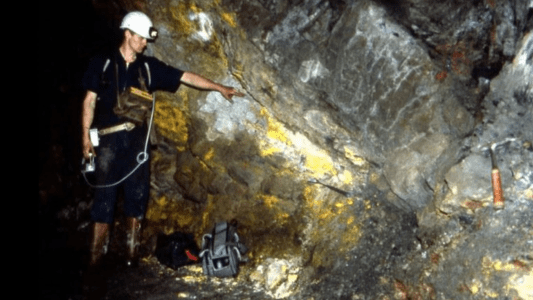A new technology that stores energy underground could make geothermal energy more cost competitive with fossil fuels and traditional renewables — and help accelerate the transition to a clean energy future.
Geothermal energy: Earth’s core is about as hot as the surface of the sun, and you don’t need to dig too far into Earth’s crust to feel the effects of this heat — temperatures rise by about 80 F for every mile you travel below the surface.
This geothermal energy can produce clean electricity by using hydrothermal reservoirs — underground locations where geothermal energy heats water flowing through porous rocks — to create steam to spin turbines.
Geothermal energy is much cleaner than fossil fuels and more consistent than solar or wind power. It’s also renewable — the amount of heat generated by the Earth is nearly unlimited.
Geothermal energy is much cleaner than fossil fuels and more consistent than solar or wind power, which rely on weather conditions. It’s also renewable — the amount of heat generated by the Earth is nearly unlimited. Another advantage is that it requires very little land compared to wind and solar.
Despite these benefits, geothermal energy provides just 0.4% of US electricity, and one of the factors holding it back is the need to build plants near hydrothermal reservoirs, which are rare and concentrated around volcanic areas.
Enhanced geothermal systems: In the 1970s, researchers at Los Alamos Scientific Laboratory developed and demonstrated a new way to take advantage of geothermal energy that doesn’t rely on the presence of a natural hydrothermal reservoir.
It’s called an “enhanced geothermal system,” and it’s created by using drills and fracking techniques to fracture hot, impermeable rock underground. Water can then be pumped into this artificial reservoir to create steam for electricity generation.
“You can effectively put a power plant anywhere,” applied geophysicist Will Pettitt told Yale Climate Connections in 2020. “All you have to do is drill deep enough and you will find hot rock.”
A new technology could make geothermal energy more cost competitive with fossil fuels and traditional renewables
Nearly 50 years later, only a handful of enhanced geothermal systems are generating electricity in the US, and while they still aren’t doing so at commercial prices, they are getting close.
Now, Houston-based startup Fervo Energy’s in-development “FervoFlex” technology has the potential to make enhanced geothermal systems significantly cheaper — and unlock geothermal energy throughout the country.
How it works: FervoFlex starts with the creation of an artificial reservoir consisting of networks of small, connected channels in hot, impermeable rock. Directing pressurized water into those channels flexes the rocks. The water can then be stored in that state for several days.
When electricity is most in-demand — for example, at night when solar power isn’t available — the pressure can be released and the mechanical energy of the flexed rocks will help drive the water to the surface for electricity generation.
In 2020, Fervo asked researchers at Princeton’s ZERO Lab to analyze FervoFlex. Computer simulations had them confident it would work, technologically, but they weren’t sure about the system’s economics.
“You can effectively put a power plant anywhere. All you have to do is drill deep enough and you will find hot rock.”
Will Pettitt
According to Princeton’s research, detailed in a paper published in the journal Applied Energy, the ability to store energy in one of Fervo’s artificial reservoirs would significantly increase the value of enhanced geothermal systems.
“The idea seemed kind of simple and elegant to me: you have this system, it’s got these inherent properties and maybe we can just exploit them to do energy storage … almost like icing on a cake,” said lead author Wilson Ricks.
“It turned out to be, unequivocally, more valuable in almost every context, and actually a really big potential advantage,” he continued.
Looking ahead: In February 2022, Fervo secured a $4.5 million grant from the Department of Energy’s Advanced Research Projects Agency-Energy (ARPA-E) to further develop its technology.
More recently, it raised $138 million in venture capital funding, led by investment firm DCVC. That money will help it complete two pilot projects, including one with Google in Nevada, and start evaluating projects elsewhere in the US and internationally.
“Fervo is the right company at the right time,” said Matt Trevithick, partner at DCVC. “The United States needs 200 GW of reliable clean power to achieve a zero-carbon electricity grid. Fervo is poised to make geothermal as important as solar and wind to our energy future.”
We’d love to hear from you! If you have a comment about this article or if you have a tip for a future Freethink story, please email us at [email protected].






